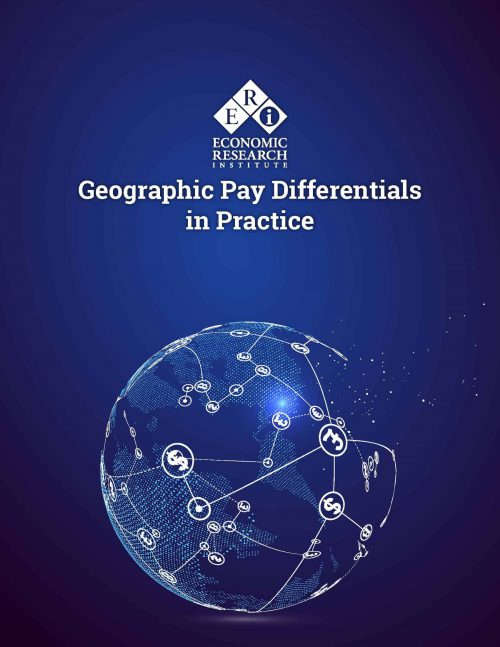Why it makes a difference in total rewards
The difference between the cost of labor and cost of living can mean many different things to many people. In total rewards, it is important to address how cost of labor and cost of living are applied in our profession and business.
Cost of labor is determined by the supply and demand of labor across all industries and occupations by geographic location. It represents the cost to hire and retain local nationals. The cost of labor reflects the external labor market’s pay practices for total compensation based on all jobs combined for each geographic location.
Cost of living measures the required costs to maintain a certain standard of living within a geographic location (based on a market basket of goods and services including consumables, transportation, health services, housing, and taxes paid by an employee). The cost of living can be referenced to compare the cost to live in one city as compared to another city. It is commonly used to manage relocations as part of a global mobility program.
Cost of labor and cost of living are frequently used to manage these important business decisions:

What are the differences between cost of labor and cost of living?
Where cost of living is very valuable in managing relocations and temporary global assignments, cost of labor is most valuable in managing ongoing, regular assignments for new hires and existing employees. This includes developing the compensation strategy, creating salary structures, managing geographic pay, and assessing the cost of conducting business in a location.
A comparison of the cost of living and the cost of labor will always generate very different percentages. For example, the table below compares the percent difference in the cost of living and the cost of labor between the home base of Atlanta, Georgia, and three other locations in Manhattan, Chicago, and Los Angeles:

For example, Manhattan is 116.9% higher in cost of living and 23.0% higher in the cost of labor than Atlanta, Georgia.
U.S. merit increases are based on the cost of labor and commonly reflect the external labor market based on what other companies plan for their annual pay increases. Occasionally, cost-of-living increases may be implemented, but they are typically contractual in nature. Cost-of-living increases are typically based on increases in the consumer price index for a geographic location.
As inflation increases to double digits in a given country, consideration of cost-of-living increases typically become more prevalent. For example, in the early 1980s, the United States had double-digit inflation with salary increase budgets of over 10%. During this time, some companies elected to deliver both merit increases and cost-of-living increases, though they were frequently administered on two different dates. Keep in mind, salary increases frequently trail changes in inflation—they don’t always change at the same time.
You will notice that cost of labor is commonly used for managing core compensation programs for local national employees, while cost of living is used to manage “temporary” relocation pay—especially under international mobility programs. Occasionally, companies may pay a temporary relocation allowance, when appropriate, for domestic relocations. Normally, these are phased out over time once an employee adjusts to the new cost of living in the new location.
How can cost of labor and cost of living be used together?
Key business decisions may occasionally require consideration of both cost of labor and cost of living in the analysis. For example, when a business is considering offshoring, the cost and availability of labor, cost of living, cost of conducting business, business climate, and taxation should all be considered in the decision-making process.
Reliable reference sources, such as ERI’s Geographic Assessor (for geographic labor differentials) and Relocation Assessor (for cost-of-living analyses), are valuable in managing these important decisions as part of your total rewards program.
ERI Economic Research Institute compiles the most robust salary, cost-of-living, and executive compensation survey data available, with current market data for more than 1,000 industry sectors.
ERI’s Assessor Series – solutions for every compensation decision





